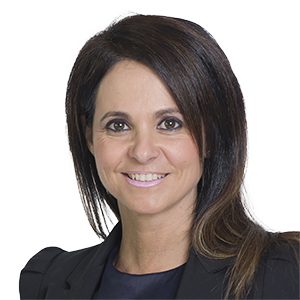The 29th Conference of Parties (COP 29) will be held in Baku, Azerbaijan between 11 and 22 November 2024. COP 29 (or the Finance COP) is convening at a time when countries are grappling with increased impacts of climate change – some parts of the world are burning, some parts are drowning, and people everywhere are struggling to cope and in many cases survive – particularly and always the poorest and most vulnerable. This is compounded by heightened geopolitical tensions and conflict, trade disputes and tensions between parties over issues such as carbon border adjustment mechanisms, especially between developed and developing countries.
The world appears to be in trouble. Many countries are struggling with high debt burdens and South Africa is no exception. Globally, we are also experiencing a period of disruptive elections, right wing movements in Europe, support for anti-immigrant and anti-climate policies, and genocide and human rights abuses.
In terms of climate targets, the world is way off track. The 2024 United Nations Emission Gap Report records that greenhouse gases (GHGs) rose to a new high of 57.1 gigatons of carbon dioxide equivalent (CGtCO2e ) in 2023 (with the power sector as the largest contributor at 15.1 CGtCO2e ). GHG emissions across the G20 members also increased in 2023 and accounted for 77 per cent of global emissions. The six largest GHG emitters accounted for 63 per cent of global GHG emissions (these include China, USA, India, the EU, Russian Federation and Brazil). By contrast, least developed countries accounted for only 3 per cent. Average per capita GHG emissions are close to three times higher than the world average of 6.6 tCO2e in the United Sates of America and the Russian Federation, while they remain significantly below it in the African Union, India and least developed countries.
The Emissions Gap Report records that nations need to aim higher – estimates are that to get to a least cost pathway for 1.5 ⁰C, emissions must fall 42 per cent by 2030 compared with 2019 levels. For 2⁰ C, emissions must fall 28 per cent by 2030. These findings are similarly reflected in the reports on the first Global Stocktake (GST). In terms of the GST Reports, it is submitted that to achieve the Paris Agreement targets, GHGs need to be cut by around 43 per cent by 2030 and 60 per cent by 2035 from 2019 levels, aiming for net-zero CO2 emissions by 2050.
Is it possible to get there? Both reports suggest that it is, provided that, among other things ‘there is an unprecedented increase in the support provided to developing countries along with a redesigning of the international financial architecture’. The international financial system needs to be transformed to support low emission, climate resilient development to mobilise support for climate action in developing countries.
The New Collective Quantified Goal (NCQG) on climate finance is aimed at setting a new financial target to support developing countries in their climate actions post - 2025 and will be a major focus at COP29. Informed by the outcomes of the technical expert dialogues conducted in September, Ministers’ deliberations are expected to guide the setting up of the NCQG, which aims to channel greater funds towards climate action in developing countries to support their needs and priorities, as well as low carbon, climate-resilient solutions; scale up finance from public and private sources and address the quality and accessibility of climate finance.
Successful negotiations at COP29 are crucial, as the funding quantum dedicated to the NCQG will determine the ability of developing countries to implement their Nationally Determined Contributions (NDCs). There is, as expected, a diversity of opinions regarding the quantum, quality and access of climate finance for developing countries. On quantum, the amounts range from US$ 100 billion annually which was previously agreed, to US$ 1 trillion annually.
The next round of NDCs are due for submission in early 2025 ahead of COP30. Nations need to cut GHGs and deliver NDCs which promise cuts of 42 per cent by 2030 and 57 per cent by 2035 to get on track for 1.5 ⁰ C. So where are we in South Africa? South Africa’s current status quo is unsustainable, given stalled GDP growth (0.4 per cent), rising unemployment (33.5 per cent) and high inequality (55 per cent of South Africans live in poverty).
South Africa requires significant investment in mitigation, adaptation and preparing society for a just transition to net-zero by 2050. The Presidential Climate Commission (PCC) estimates that R 334 billion per annum will be required to meet net-zero by 2050, and that R 535 billion per annum is needed in the short term to meet the 2030 NDC target. To meet its NDCs by 2030, South Africa needs to invest R1 trillion in mitigation and up to R10.9 trillion in adaptation. Currently the majority of financial sources are in debt financing (75 per cent) with only 1 per cent and 2 per cent in grants and concessional funding respectively. In addition, most funding is allocated to mitigation projects (81 per cent) with only 12 per cent allocated to adaptation projects. Addressing climate change and transitioning to net-zero by 2050 is an ‘unprecedented challenge for South African society- the economy’s transformation will be one of the most complex transitions globally. But the cost of inaction on the economy and jobs will be greater’.
Climate finance adaptation and international cooperation will be at the heart of the COP 29 negotiations. It is hoped that the NCQG will provide clear and ambitious quantification of the financial support needed by developing countries to implement their climate commitments. Access to finance must be scaled up to offer new additional and predictable funding that is fit for this purpose. Grants and highly concessional funding are needed to derisk finance to priority sectors and technologies and allow South Africa to launch beneficial projects and attract private sector investment. Crucially the climate finance should not exacerbate South Africa’s current debt crisis and existing funds must not be repackaged. Developing countries cannot be expected to resort to loans with onerous conditions and worsen the debt crisis for South Africa.
Adopting a strong NCQG at COP29 is crucial to set the foundation to ‘rebuild and strengthen trust in the international climate finance system’. Although South Africa’s transition to net-zero is complex, South Africa is an extremely resilient nation and the world is watching. A turbocharge of funding will hopefully empower South Africa to leap towards a greener more resilient future. South Africa must take the lead in defining its unique transition ensuring alignment with our national interests, development goals and access to finance. As stated by President Cyril Ramaphosa.
“Great prospects are ahead if South Africa uses global change to leverage local transition. We must pursue our climate commitments in a way that delivers just outcomes, achieves energy security, ensures no one is left behind and must create employment”.





